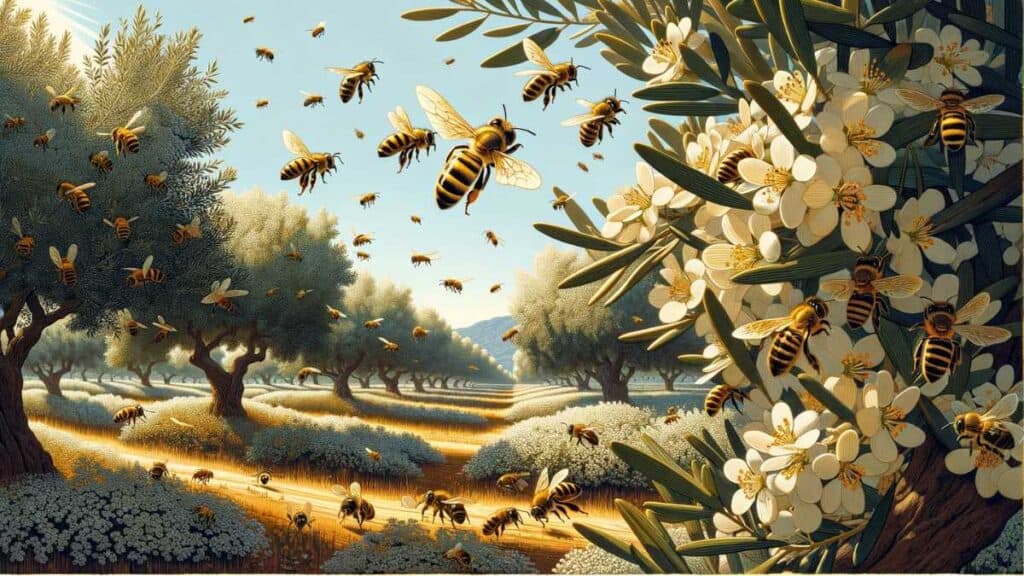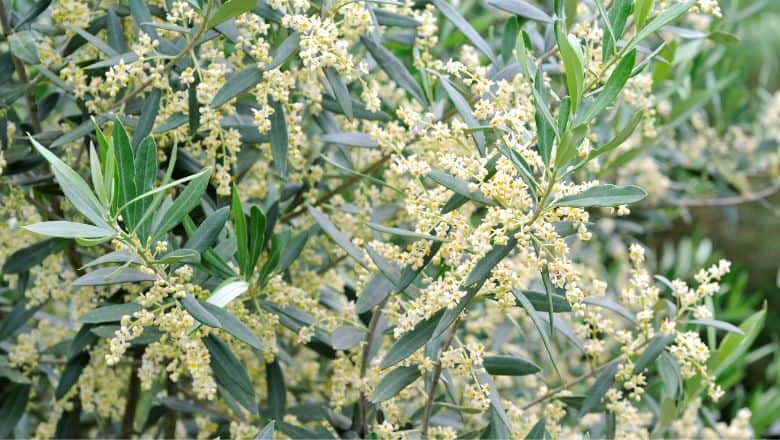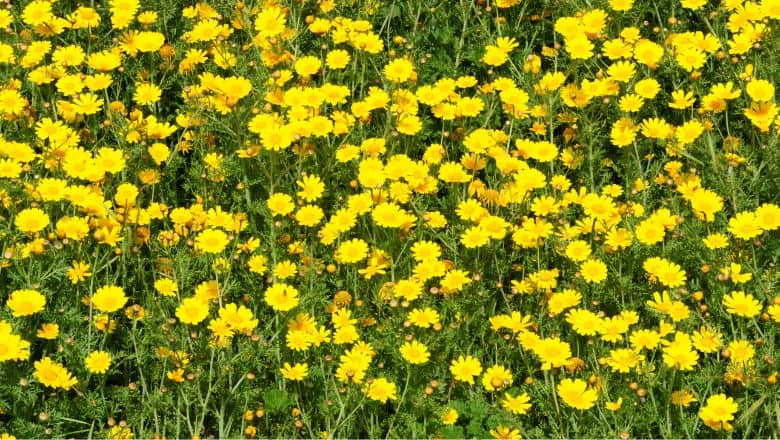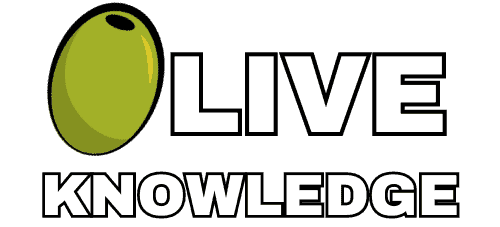How to Attract Pollinators to Your Olive Trees
Olive Knowledge is a part of Amazon Associates. As an Amazon Associate, we earn from qualifying purchases. Read our Affiliate Disclosure to learn more.
Put simply, pollination is where pollen is transferred by either an insect, an animal, or the wind, between plants. It allows fertilization and fruit production – in this case, olives!
We are going to look at how to attract pollinators to olive trees and why you may want to consider planting certain species among your olive trees to encourage this.
Key Takeaways:
- Olive trees self-pollinate and are also wind-pollinated, not requiring bees or insects.
- Encouraging bees around olive trees is beneficial; planting bee-attracting plants is advised.
- Flowers with blue, yellow, and purple petals attract bees due to high nectar and pollen.
- Research indicates bees visiting olive blooms; encouraging bees may increase olive yield through cross-pollination.
Do Olive Trees Even Need Pollinators?

Olive trees do not need pollinators in the form of bees or other insects and animals. If this is the case, why are we telling you about olive trees and pollinators?
Because olive trees do not necessarily require outside assistance to pollinate, it does not mean they cannot benefit from the help of, for example, bees.
Bees are the world’s most prominent pollinators. In fact, many species of plant that we consider vital would not exist without bees. We have a more in-depth article on bees and olive trees that makes interesting reading, so we’ll cover it in brief here.
Bees are attracted to nectar. This is a secretion within the flower heads of many species that encourages bees to pollinate by visiting, collecting the pollen, and taking it back to the hive. On the way, they will visit several other flowers and leave pollen from elsewhere while collecting more.
However, the flowers of the olive tree are small and, among the many other possible targets, are not particularly attractive to bees. If bees are lacking in food, they may resort to olive blossoms.
The simple fact is this: olive trees are self-pollinators (the flowers of one tree pollinate other flowers of the same tree) and are also pollinated by the wind – known as cross-pollination, where different types of olive trees pollinate each other – without the help of insects and other pollinators.
But should you encourage bees into your olive tree areas? There are reasons why you should, so let’s talk about why and how you should do so.
How To Attract Pollinators to Olive Trees

While olive trees are primarily self-pollinating, there is no reason why you should not encourage bees among your olive trees. In fact, there are genuine reasons why planting flowers and shrubs that attract bees should be encouraged.
As we mentioned earlier, there are some plants that we need that are pollinated mainly by bees and some other insects.
Blue and Purple Flowers for Bees

Among the many blue flowering plants that will attract bees – plus hoverflies and butterflies, each of which are also great pollinators – are delphinium. These tall and attractive plants bloom with long heads of flowers high off the ground and are popular plants on borders.
Here are some more blue and purple flowers that will attract bees to your olive trees:
- Lavender is a favorite with bees and provides attractive ground cover.
- Blue alliums add an unusual touch to a flower display and are frequently visited by pollinators.
- Crocuses are excellent flowers for attracting bees and are easy to grow.
- Buddleia is famous as the ‘butterfly bush’ and attracts a wealth of pollinators but be aware this shrub grows quickly and can take over a large space.
- Forget-me-nots and many wildflowers, such as cornflowers grown together, look wonderful and attract pollinators.
- Blue asters are a great addition to your olive trees.
Yellow Flowers for Bees

Yellow is a wonderful color to add to your olive trees, and the most spectacular of all is the sunflower. Extremely attractive to bees and other pollinators, the wonderfully large and delightful heads of the sunflower are a magnificent sight among the trees. The following are other flowers that will attract pollinators to your olive trees:
- Yellow irises attract many insects and have the advantage of being able to grow in a pond or in a border.
- Also, consider some of the many wildflowers – corn marigolds, for example – and let a few dandelions remain in a wildflower area among your trees.
- Black Eyed Susan, with its large daisy-type bright yellow flowers, is an excellent source of pollen and nectar.
- Marigolds are a popular choice as they will bloom throughout the summer.
- Gerbera is another daisy-type flower that is available in bright yellow for bees.
- Finally, we cannot overlook the humble daffodil which heralds the spring.
The above are just a few examples of blue, purple, and yellow flowers that will attract bees and other pollinators, and there are, of course, many more. Bees will also visit other colors – they like a common field poppy, for example, which is red – so don’t limit yourself to the above.
Now that we know what to plant, is there a real purpose to attracting pollinators, given we’ve already said that olive trees are generally self-pollinating and wind-pollinating? There’s no harm in adding an extra potential pollination element, and flowers always look great!
Can You Increase Olive Yield with Extra Effort on Pollination?

Going back to the beginning of this article, we said that olive trees do not need bees and other pollinators. This is because they are self-pollinating and also rely on the wind.
We then explained that while bees are not a necessity, they can be an aid to pollination. Hence, we have suggested a selection of flowers that can be introduced to encourage bees to help pollinate your olive trees.
A scientific investigation by ISHS (The International Society for Horticultural Science) carried out in Northern Italy looks at the subject of olive trees and bees in more detail. In performing this research, it was discovered that pollen from olive trees is frequently found among the pollen collected by bees in this region.
From this research, which concludes that, in fact, bees frequently visit olive blooms, it may be understood that we underestimate the interaction between bees and olive trees.
Can yield be increased by encouraging bees? All the indications are that this could be the case. Self-pollination results in the same fruit and yield, while cross-pollination – via bees and other insects – has been shown to improve the fruit of the trees, especially where three different varieties are grown in close proximity.
The Bottom Line
We hope that this brief look at how to attract pollinators to your olive trees has helped you understand that while olive blooms are not usually listed among the flowers that pollinators prefer, they are far from ignored.
Furthermore, encouraging bees and other pollinator species to your olive trees by introducing plants that bees are attracted to may not only improve your fruit and yield but also provide additional welcome food for bees, which is only ever a good thing!
